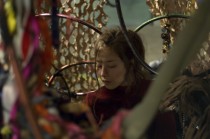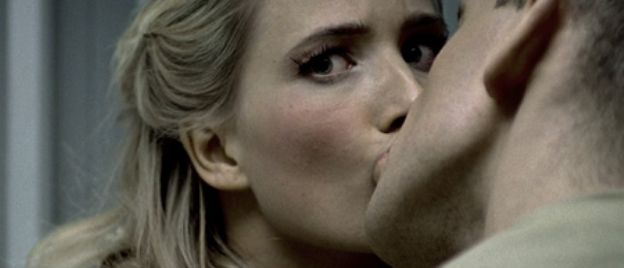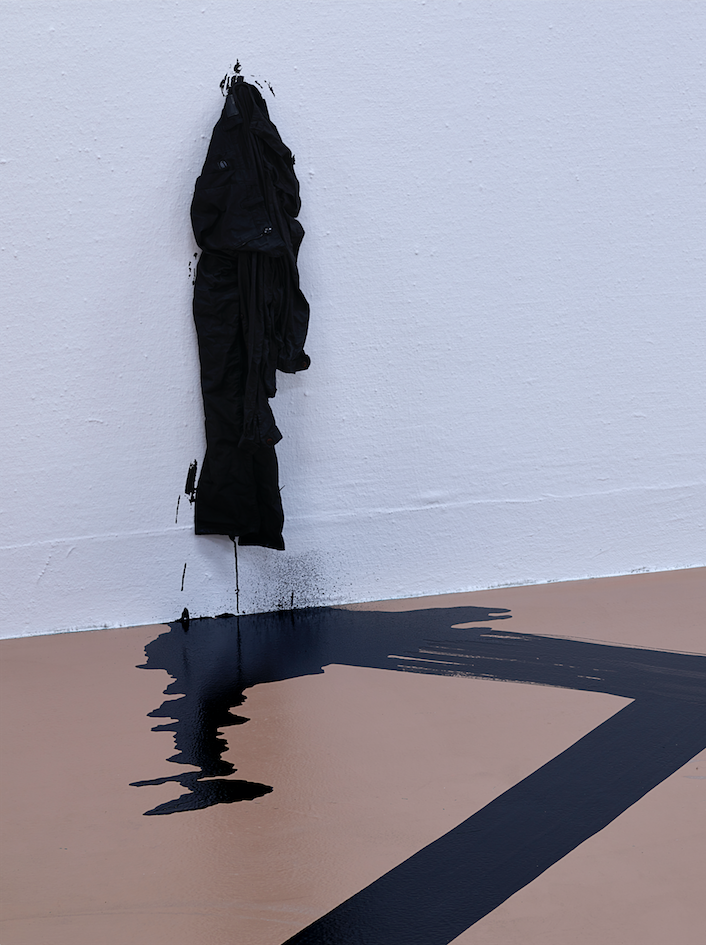Daria Martin
S.M.A.K.
13 October 2007 – 13 January 2008
The exhibition of Daria Martin is the last part of the film trilogy compiled by the S.M.A.K.’s curator Nina Folkersma. Earlier this year, we showed films by Jesper Just and Victor Alimpiev. At the invitation of S.M.A.K. and PERFORMA 07, Daria Martin produced a new film, entitled Harpstrings and Lava , which premiered at the exhibition in the S.M.A.K.
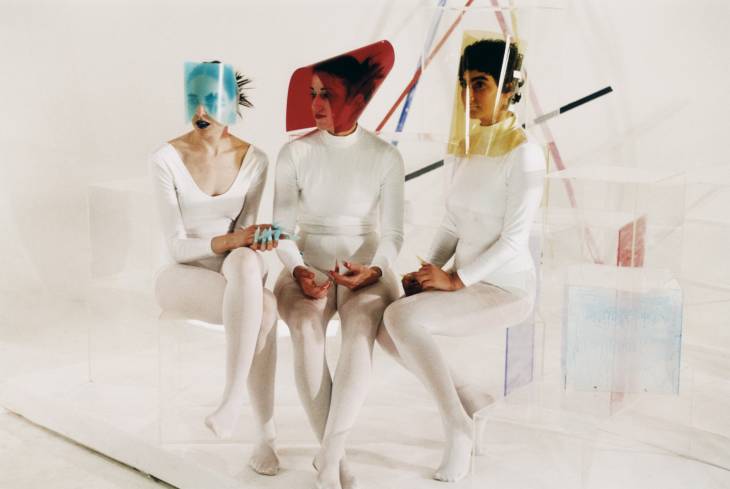
For Daria Martin film is the ultimate ‘Gesamtkunstwerk’ in which she is able to give shape to her interest in dance, music, performance and art, as well as her predilection for the imaginary and the magical. Martin is namely fascinated by the magical and symbolic character the relationship between man, performer and object can acquire. In this context she regularly refers to the work of Joseph Cornell. Cornell (1903-1972) created wooden viewing boxes in which he collected objects representing his innermost thoughts, desires and emotions. Indeed, Daria Martin has also described her films as ‘Staged Joseph Cornell Boxes’. In one of her first films, ‘Birds’ from 2001, we see six performers all wearing retro-futuristic costumes, carrying out all sorts of activities with colourful objects and attributes. The film is part of a trilogy that can be regarded as a tribute (with a sly wink) to avant-garde performance art, especially that of Oskar Schlemmer. Schlemmer (1888-1942) founded the theatre section of the Bauhaus and became well-known for his constructivist costume designs for the Triadic Ballet, which comprised basic geometric shapes and in which performers and object merged together as it were. Daria Martin focuses on stylistic and aesthetic elements and uses cheap props she makes herself. In this way she immediately reveals the world of fantasy she evokes in her work. Martin once said ‘My 16mm films are like magic acts that show how the trick is done’.
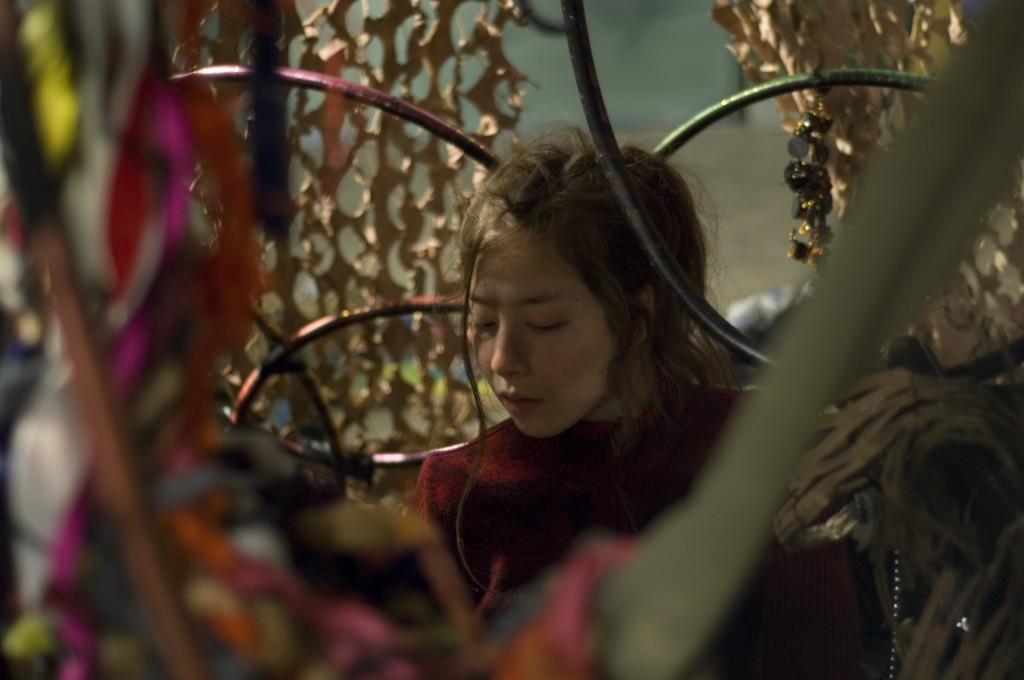
The imaginative, symbolic relationship between performer and object also play a central role in the new film, ‘Harpstrings and Lava’ (2007). A girlfriend gave Martin the inspiration for the film. As a child this friend often dreamed about two incompatible elements, namely a slow-moving compact stream of lava and the extremely fine strings of a harp. The dream was frightening not because the lava overpowered the harp but because the two elements somehow came together and were able to exist at the same time. In ‘Harpstrings and Lava’ (2007) two performers, Nina Fog (actress/ dancer) and Zeena Parkins (composer/musician/harpist) attempt to evoke a similar intense experience in the spectator.
The film starts with Nina, an animal girl who finds herself in a sort of cave filled with pipes, streamers, beaded necklaces and objects scattered around. Nina curls up, uncurls, grimaces and groans as she attempts to wrest herself from this syrupy underworld. Zeena on the other hand calmly plays her harp in a De Chirico type of setting. With great concentration she draws terrifying or delicately plucked sounds from her harp strings. Images of the curling tendrils of a three-hundred year old Wisteria in Kew gardens in London link these scenes. Like muscular arms this vine tightly grips and envelops itself as it grows. Gradually both worlds merge together. Nina’s sensual world ‘infects’ Zeena’s composure and Zeena’s control fills Nina with an ever-growing power.
Daria Martin’s new film is like one of Grimm’s fairytales. She transports the spectator into a magical, surrealist world full of underlying meanings. Is the dynamism between Nina and Zeena a metaphor for the relationship between body and mind, id and ego? Does the nightmare about harp strings and lava have something to do with the unconscious experience of our own birth and does it symbolise our slow sticky passage down the parturient birth canal, before we are rudely confronted with the outside world? As is usual in fairytales and dreams, the meaning of the story remains mysterious and depends on personal experience. And it is precisely this that makes the film such a fascinating work of art.
